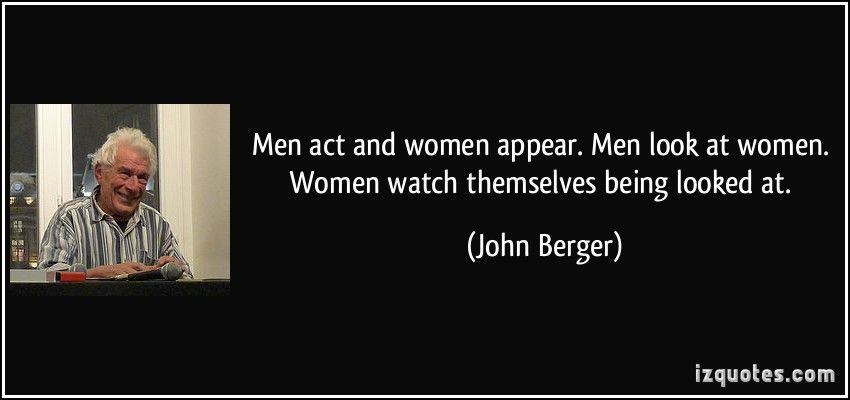The battle for changing the tagline of fairness cream from Fair & Lovely to Glow & Lovely is a recent development in today’s era. The standard of beauty norms fixed by viewers has always been a white toned, slender neck and shiny, frizz-free long hair. We can see that in every advertisement, be it any beauty product or it falls under any non-domestic commercials. Femininity is reflected only by putting on a Female physique at the display. The soft drink “slice” also has to be as desirable as sensational Katrina’s seducing pose.

Besides the stereotyped or clichéd necessities of women, even men’s product requires women appearance either to objectify women, to attract the male audience or to show that men are superior to women. Women used to be treated as an ornament to their products. Why does a woman have to be there to promote banana hammock ads? Commercials are just a glance at the actual reel world running parallel to the real world. Heroines have got not only limited space on the screen but also the narrow perspective of the production house. They have been restricted to certain areas such as the kitchen, bedroom, or at the dance floor in the bar, while men hold the superior rank, chasing success by cracking deals, doing errands at offices, etc. Researches on cinema’s business have revealed that the movies that have maintained audience expectations, encompasses traditional values by showcasing female character as submissive, shy, fragile, and talks high of chastity are blockbuster. The formula to win the public heart was used to be via playing the victim’s card. Bearing injustice and domestic violence meted out by the family head used to be a token of sympathy for actresses.

Female characters in Bollywood were viewed through the eyes of a predominantly male viewpoint because of the difference in the number of men compared to women in the backstage crew such as scriptwriters, producer, director, and many others resulting in the age-old stereotypes and role prejudices that persist in cinema.
The English art critic and writer John Berger said in his 1972 essay on art criticism, Ways of Thinking, “Men act, women appear.” Men watches, women watch themselves being watched”, contributing to his study of women’s portrayal in the media and digging about the ‘male gaze’ idea.

The stereotypical depiction in commercial Hindi films of the ideal Indian woman has been a matter of concern among feminists. Noting the pre-existing trend of depicting women either as the mistress of the hero or as a competent housewife. An alternative solution has been the rise of independent films in mainstream commercial cinema that present topics of concern to women from a deeply misogynistic viewpoint. Many of these films depict women as independent and passionate women.
Movie “Pink” starring Tapsee Pannu and Amitabh Bachchan raises the women’s consent issue and helped the audience to clarify the literal meaning and significance of the word ‘NO’. Now the female section has also got its spot in the off-screen process. They are emerging as the backbone of cinema. Women’s writing is turning out enthralling and inspiring. “Raazi’s” witty dialogues and screenplay written by Meghna Gulzar has achieved critical success. Changing times, however, has brought many women ‘s achievements to the fore: ‘Gully Boy’ by Zoya Akhtar, and Gauri Shinde’s famous ‘English Vinglish’ is directed by women artists.

Movies like listed below such as :
- Mardani (2014), where a lady cop proves the possibility in bringing justice within two working days
- Queen (2014) shows that girls can enjoy foreign trips on their own,
- Gulab Gang (2014), reflects two versions of women, Juhi Chawla an oppressor while Madhuri Dixit played the role of Reformer.
- Thappad (2020), gives air to the most unattended issue, just a slap is actually a gesture of domestic violence.
There are many more similar movies that is breaking the glass ceiling.
The silver screen and commercials are the closest one to this trend fixing industry. It got highly affected which is at times for good. Now, look at the ad of shampoo ‘Dove’. It has evolved to the point where every texture of hairs, be it curly, wavy, straight, not so straight, long, or short is acknowledged. It does not follow the prefixed notions of hair such as ‘Nihar Shaanti Amla’ hair oil does.


Cinema is stepping out of the patriarchal mindset so the commercial world too. The ad of ‘Fortune oil’ stares Akshay Kumar with the tag line “Ruko mat” is helping in shattering the stigma that females are not supposed to prepare their meal. He showed that there is nothing wrong with cooking. Even a man can learn it.

The representation of women’s empowerment has now started taking its ground. We can see the difference in approaches in detergent commercials. Earlier women were shown struggling with the stains on their men’s shirts. Now referring to the detergent ‘Rin’ ad where the girl in spotless white kurta materializes from the crowd to respond to the manager of the company, who was commenting on the literacy rate of the village.

Despite the fact, the world is again undergoing the reawaking phase, yet there is a need to ponder upon what an impactful industry serves, is going to set the mindset of the entire nation. So the content of television and cinema should be chosen wisely.
Also read: Is It Fair To Remove ‘Fair’ From Fair & Lovely? -‘An Indian Narrative’








